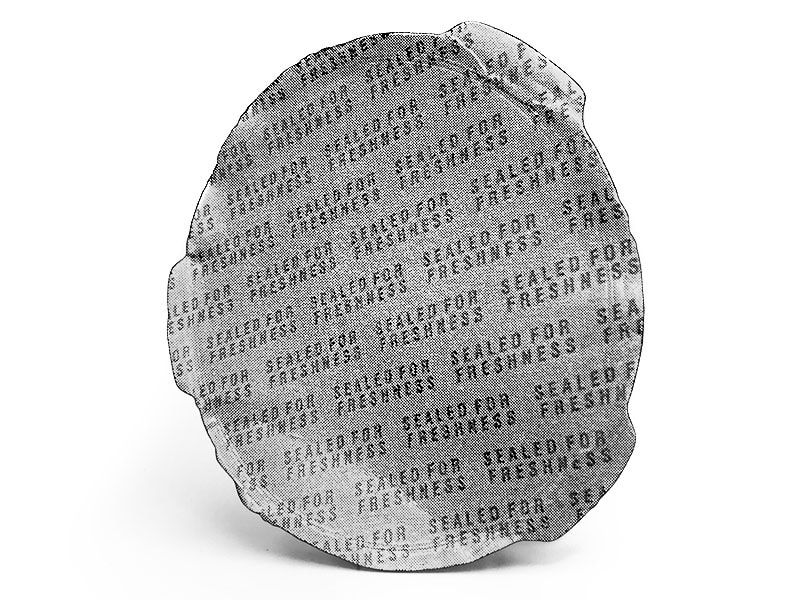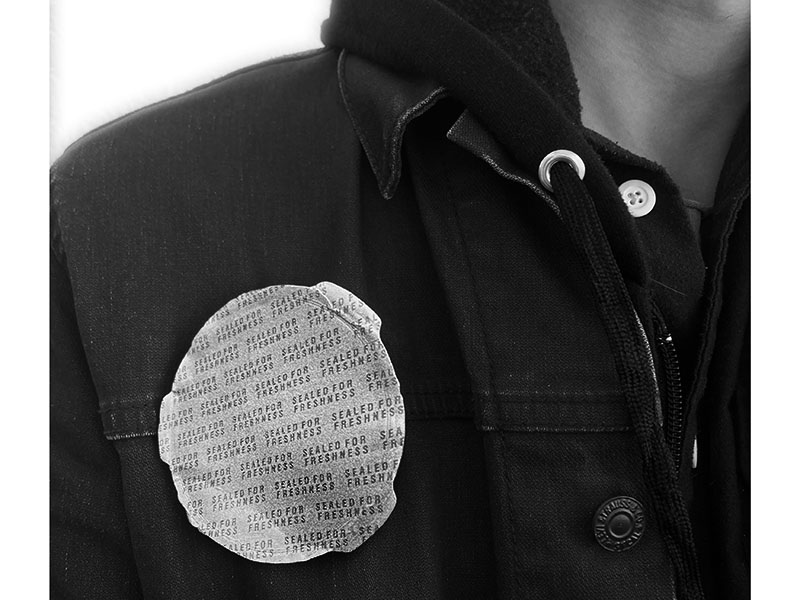AJF has asked this year’s Young Artist Award winner and four finalists to tell us about their backgrounds and their thoughts on the future of the art jewelry field. Their work represents a group of outstanding pieces of contemporary jewelry.
Bryan Parnham is this year’s Young Artist Award recipient. He received an unrestricted cash award of US$7,500 and exhibited his work in Platina’s booth during Munich’s jewelry week. His is the first of our interviews with the honorees.
AJF’s Young Artist Award acknowledges promise, innovation, and individuality, advancing the careers of rising artists. The competition was open to makers of wearable art age 35 and under who are not currently enrolled in a professional training program. Judging was based on originality, depth of concept, and quality of craftsmanship. This year’s jurors were 2022 AJF Artist Award winner Mallory Weston (US); collector and gallerist Atty Tantivit (Thailand); and maker Ted Noten (The Netherlands).
Note: We added interviews with the finalists over the ensuing months.
- Read the interview with finalist Everett Hoffman here
- The one with Margo Csipö is here
- We spoke with Corrina Goutos here
- Aaron Decker answered our questions here
- Also, watch AJF Live with Bryan Parnham here
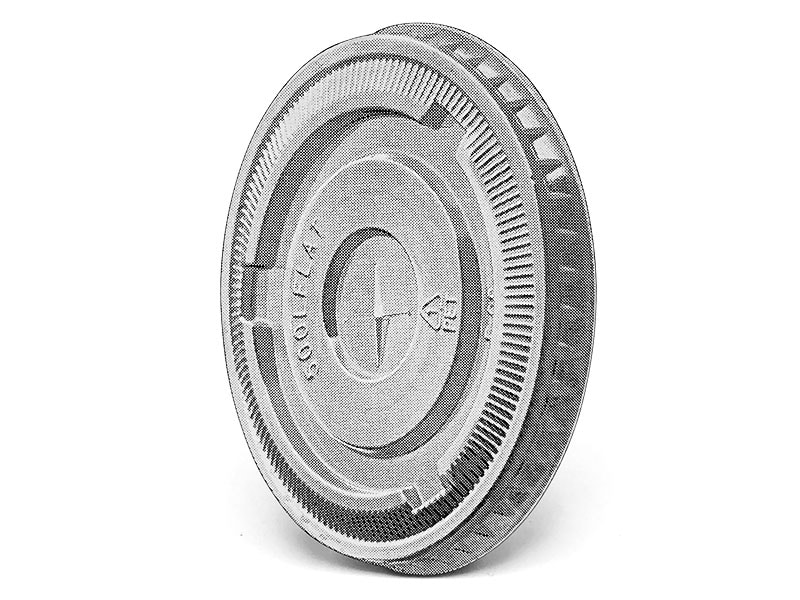
AJF: Congratulations on winning the Young Artist Award competition—that’s quite an accomplishment! How did you become interested in jewelry? And what inspires your work?
Bryan Parnham: Well, jewelry was a bit of an accident. I was interested in craft as a career path that might teach practical skills while maintaining an artistic motivation. I did a fair bit of woodworking and ceramics before landing in metals, and I think I stuck there because tools were just tools. A saw can be used to cut metal or wood or plastic. There were kilns and chemicals and power tools and hand tools. The metalsmithing studio is a place where all materials and processes are fair game.
That’s also part of the inspiration for the work. I want to operate in the space between the standardized mediums. I want to be a painter, a photographer, a printmaker, a sculptor, an engineer, a scientist, a philosopher, a comedian, a scholar. But I don’t want to be just one—I want to pick and choose combinations and weave between them. Jewelry is small and relatively permissive. It’s the right place for me to poke at the boundaries that separate different mediums.
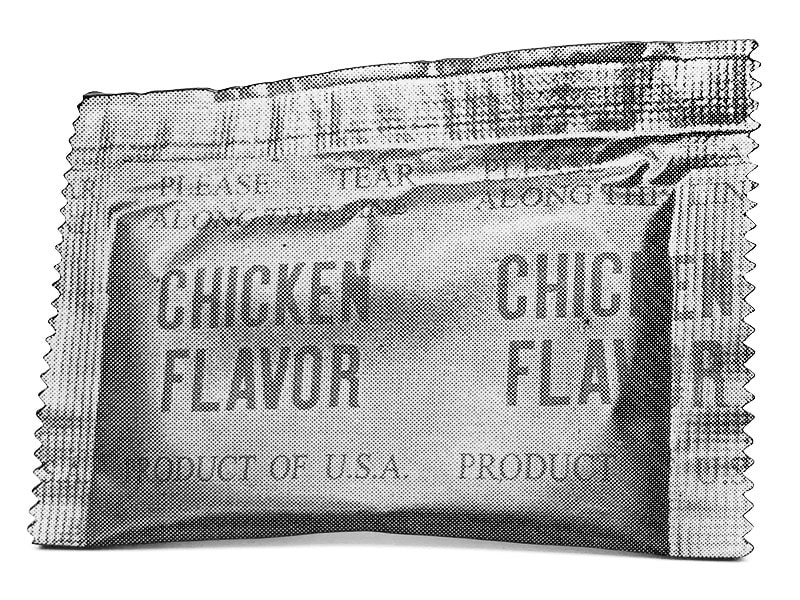
What does winning the award mean for you? Do you think it will influence you going forward?
Bryan Parnham: This award feels like a confirmation that I haven’t lost my mind. Alone in the studio, it’s easy to doubt your decisions. Inventing a problem and then obsessing over its solution is a type of madness. But that gets soothed by recognition from the community. Getting to be in Munich with artists, collectors, curators, and gallerists blew me away with how much everyone cares about this small corner of the art world. The biggest influence will likely be through the future relationships with the people I met during the week.

Tell us about the work you applied with.
Bryan Parnham: There’s an imagined audience member looking over my shoulder every day in the studio, saying things like, “What asshole would walk around with that tacked to their chest?”
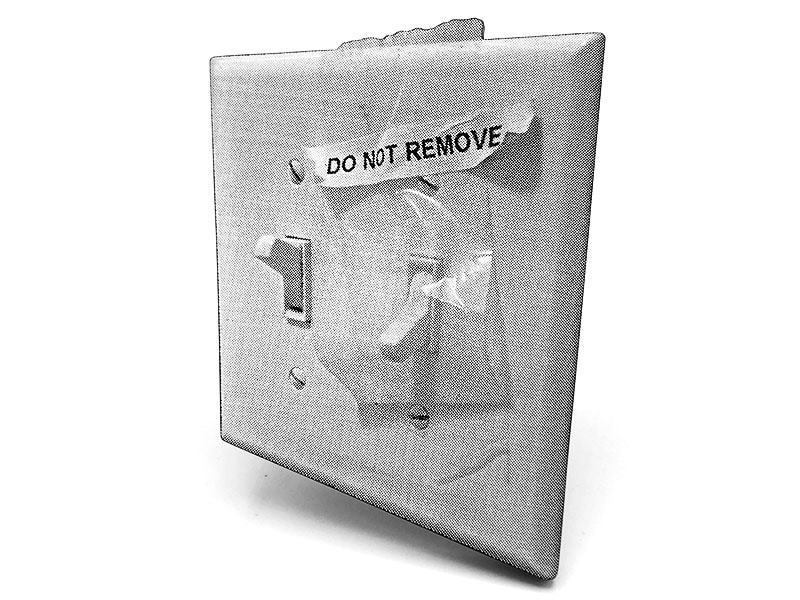
The absurdity of our medium is seldom addressed. The field is cliquish, arcane, and founded in large part on notions of class and consumerism. So, in part, it’s easy to indulge the mischief of making the wearer look foolish. Then again, these are things I need to make in order to digest big ideas. Aesthetics. Structuralism. Ontology. Modernism. Semiotics. All those -ologys and -isms that are easier to swallow with a tall glass of foolishness. This work is a personal attempt at turning theory into praxis. An engagement with the Proustian moment and the moment of the Absurd. Grasping at a synthesis of sentimentality and cynicism. Sweet and salty.
Making or wearing these works might cause you to look like an asshole. But it might also give you an opportunity to question and reconsider the ideas that seem self-evident.
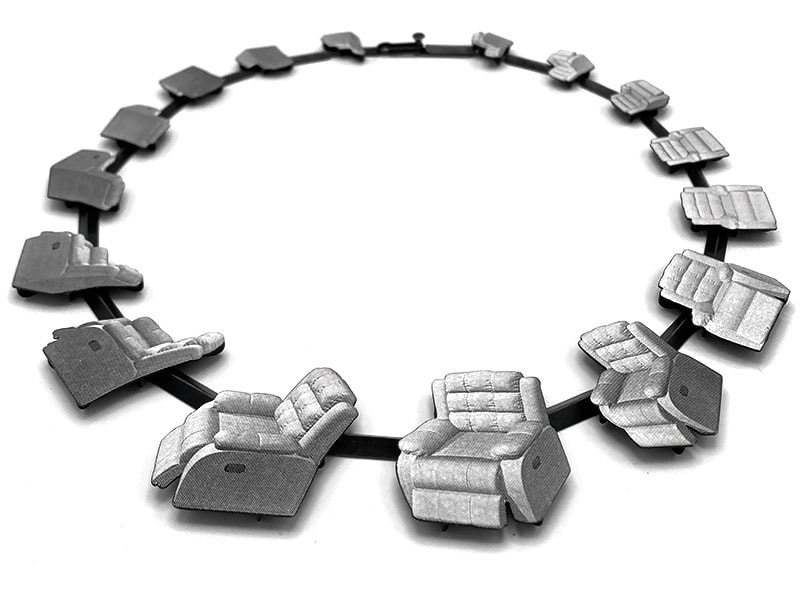
Tell us more about one of the pieces in your application.
Bryan Parnham: In an ideal world, the selection of images I use would be done completely at random. The grounding intention of the work is to recognize the unique connection a viewer would make outside my intention as the artist (an inversion of Roland Barthes’s concept of studium and punctum). But we all know it’s impossible to eliminate our biases entirely. So I’m always working on a sub-project beneath this conceptual starting point.
In the necklace Orbit/Rotation #2 (shown above), the image of a 3D model of a recliner rotates while it orbits the neck of the wearer—imitating the navigational motion available to someone operating a digital modeling program. Outside this digital workspace, the motion can only exist as an imagined projection of the motion in our mind’s eye. I’m insinuating this illusion of motion by repeating static images in sequence. The 3D model generator is a simulation of our imagined headspace, and this headspace is a simulation of “reality.” Can these levels of imitation and illusion be beautiful? Can we appreciate them as ornament as well as evidence of our limits of perception?

What excites you about the art jewelry field?
Bryan Parnham: Art jewelry has the potential to be an incubator for artists with ambitions beyond just wearable art. It certainly isn’t functioning that way for everyone. But I see some of its defining aspects as ideal grounds to shape artistic identity and prepare someone to work further afield. The community is small, so an artist is likely to find some support either in their peers or from institutions. The studio is relatively mobile, making it easy to relocate when an opportunity arises. The end products are usually small enough to ship or carry. There is a built-in aspect of commodity, so sales may be easier than in other fields. Working with jewelry can teach lessons about Craft, as well as Art, as well as Design. It excites me to think the art jewelry world could be a bridge to connect one field with another.
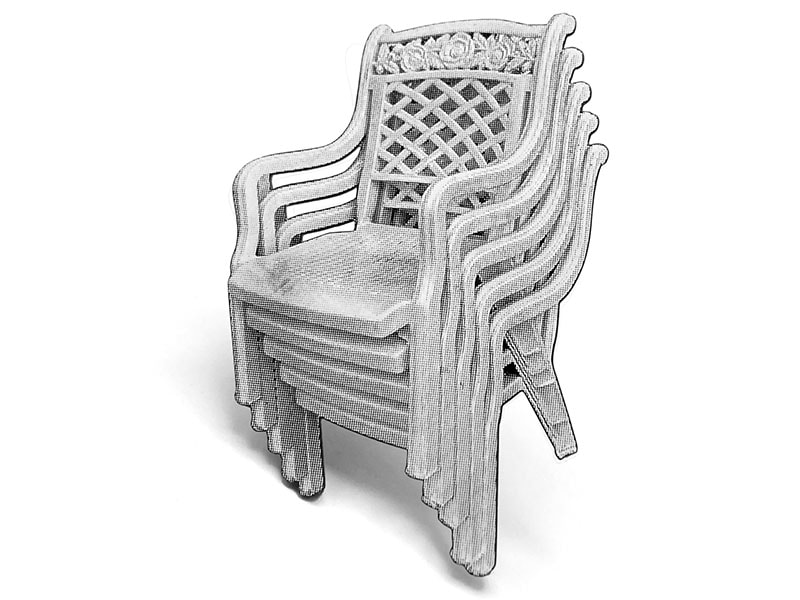
Where do you think the field is going? What new and exciting trends do you see in art jewelry?
Bryan Parnham: I don’t know. From my vantage point the field seems isolated and a little cannibalistic. Jewelry about jewelry about jewelry. And teachers teaching artists to become teachers.
Optimistically I hope the field becomes an ambassador between Art and Craft one day. But it could just as likely eat its own tail into nonexistence.
Any frustrations that you have with the field or see within it?
Bryan Parnham: Lack of recognition in the greater population. But it’s the same for art more generally. I would like the popular art world to see the richness of the jewelry world. And I would like more of the general population to see the richness in a life in art.
And I think everyone knows it, but we need a new generation of collectors, curators, and gallerists. It looks like we have an imbalance of many passionate makers and few passionate facilitators and patrons.
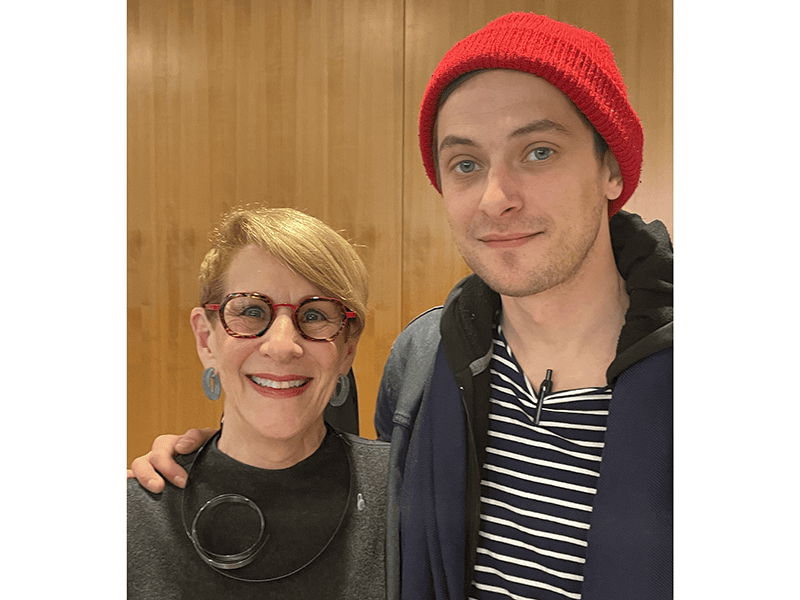
If you could write a master plan for your practice, where would you like to be five years from now?
Bryan Parnham: I’m not able to afford rent as a full-time artist. I move around, try to get residencies, live with friends, anything to keep costs down. I hope five years from now that will have changed. I hope to have a real studio where I can dedicate myself to ambitious work. I want to make big art that has a big impact. In five years, I hope to be in the throes of working hard in a dedicated space.
In the meantime, I’m interested in opportunities abroad—the Jakob Bengel Foundation Idar-Oberstein residency, the Françoise van den Bosch Foundation residency, Domaine de Boisbuchet. Some of the best work is coming from Korea and Australia. I would love to visit and work with the people there. And domestically the 92NY Jewelry Residency looks amazing. I hope to go to the Headlands Center for the Arts and Skowhegan School of Painting & Sculpture eventually. I need patrons and collectors, people to share in my ambition, so that the work can reach its potential. It’s hard to say what five years could bring—but five years ago this prize seemed impossible. I guess that means anything could happen.
You can purchase work by Bryan Parnham at Gallery O and Galerie Beyond.
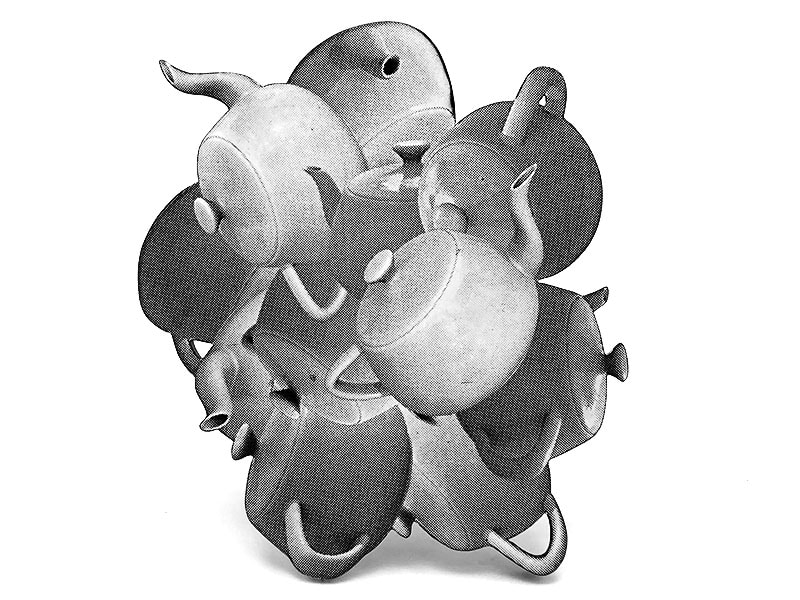
We welcome your comments on our publishing, and will publish letters that engage with our articles in a thoughtful and polite manner. Please submit letters to the editor electronically; do so here.
© 2024 Art Jewelry Forum. All rights reserved. Content may not be reproduced in whole or in part without permission. For reprint permission, contact info (at) artjewelryforum (dot) org
